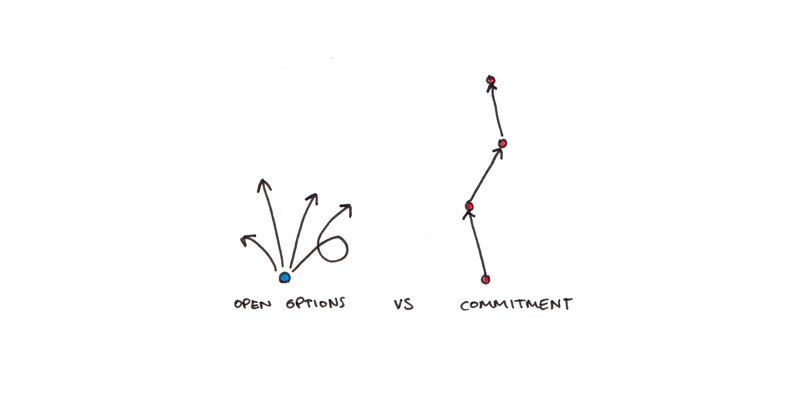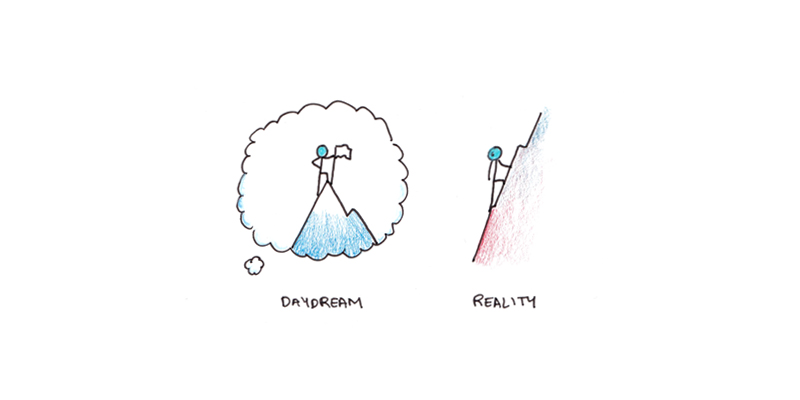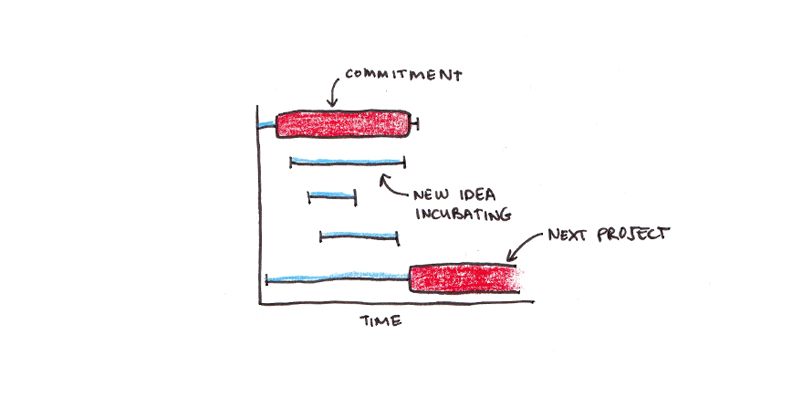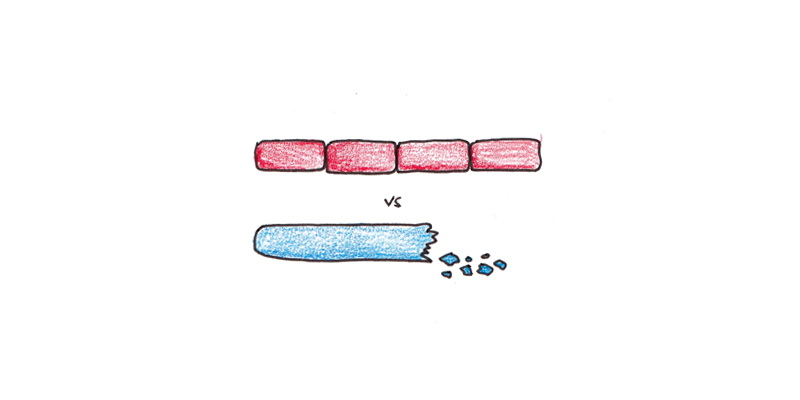I’ve been teaching online courses for 10+ years. A typical student has an array of varied interests and passions. They want to learn Spanish and guitar. And also machine learning and web development. Oh, and they want to start an online business—so they’d better learn marketing too.
I like these students. Heck, I am one of these students, so I relate to their enthusiasm.
The problem is that this enthusiasm is rarely matched with execution. Attempting several pursuits at once is a recipe for accomplishing none of them. Progress requires priorities. We need to tackle projects one at a time—not try to juggle them all at once.
The Mindset of Open Options
I recently read Pete Davis’s excellent book Dedicated. In the book, he argues against the culture of “liquid modernity,” the idea that we always need to keep our options open and avoid committing to causes, communities and projects.

Davis argues that we live in a culture that prizes keeping one’s options open. It’s better to be maximally flexible, the popular reasoning goes, so that we can respond to any opportunity at a moment’s notice. Committing to anything, even for just a few months, locks away other possibilities, and is thus undesirable.
Examined closely, the reasoning behind liquid modernity doesn’t hold up. Even if you want a more varied life than the long-haul commitment Davis encourages, you still need to commit to projects for bursts of time to make progress. The person who commits to three-month projects may not achieve mastery. Still, they will get further than the person who merely thinks about doing those projects.
Tying Yourself to Reality
While broad cultural forces may be partly to blame for our indecision, I suspect the problem my overly-enthusiastic students face is more mundane. It’s more fun to think about being good at something than to actually do the work to get good. Thus we daydream, rather than take action.

Daydreaming isn’t always bad. Sometimes thinking about something is better than actually doing it. This is particularly true when embarking on a new effort would break an existing commitment—a person who merely fantasizes about an affair is probably better off than one who cheats on their spouse. The person who sticks to their career, college or business throughout their difficulties will often get further than those who wilt at the first frustration.
The problem is that daydreaming alone doesn’t lead anywhere. None of the projects we imagine but never work on are ever realized. This can deflate even our daydreaming, as part of us knows, deep down, we’re never really going to do it.
The solution is to pick a project and see it through. Tie yourself to making a reality manifest, not simply thinking about it.
Give Ideas Time to Incubate
A side-effect of committing to one project is that you end up putting off all the rest. By the time you finally start a project, you’ve been thinking about it for awhile.
This extra incubation time has two virtues. First, it filters out bad ideas. Since you only pursue the ideas that have stuck with you during your commitment to other projects, you end up pursuing projects you care about deeply.

Second, extra time results in better plans. As you ponder a potential project, you turn over the possible difficulties in your mind. Where will you find the time? What is your precise target? What constraints will you work under? All of these questions lead to sounder plans when you finally get started.
The notion that a commitment to focused action leads to longer and better thinking may seem paradoxical. But I’ve found it to be the case in my own efforts. Committing to fewer pursuits tends to make those you do stick to better thought out in the end.
Set Shorter Projects
Short commitments tend to lead to greater accomplishment than long ones. How so?
It’s not the intention to commit that matters, but whether you follow through with it. A multi-year effort has a much higher chance at being abandoned than a three-month project does. Further, a three-month project can easily lead to another three-month effort in the same direction, provided the results from the first proved promising.

My advice is that if you’ve never stuck through a project that wasn’t externally enforced (meaning school and work don’t count), the best place to start is one that lasts thirty days. Once you’ve done a few of these, try a three-month project.
What about all those projects that require years to achieve? The answer is simple. Set your commitment for a short burst and give yourself the option to renew it at the end.
If you imagine you might quit midway, then it isn’t a commitment. It’s better to pick shorter commitments you will follow through on than to make lofty promises to yourself that aren’t actually binding.
Variety in Focus, Possibilities in Constraints
Those who focus the most often end up with a great variety of accomplishments. Actually realizing the possibilities inherent in your life is only possible by subjecting yourself to hard constraints. Above all, recognize when trying to do too much generally results in nothing being done at all.


 I'm a Wall Street Journal bestselling author, podcast host, computer programmer and an avid reader. Since 2006, I've published weekly essays on this website to help people like you learn and think better. My work has been featured in The New York Times, BBC, TEDx, Pocket, Business Insider and more. I don't promise I have all the answers, just a place to start.
I'm a Wall Street Journal bestselling author, podcast host, computer programmer and an avid reader. Since 2006, I've published weekly essays on this website to help people like you learn and think better. My work has been featured in The New York Times, BBC, TEDx, Pocket, Business Insider and more. I don't promise I have all the answers, just a place to start.